



Population :
Total Area:
Forest area (tree cover > 10% ):
Dominant ecosystem:
Main trees species:
Charcoal production:
Charcoal exports:
2 590 082
82 561 500 ha
8 Mha
shrublands, bush
Acacia, Terminalia
160 000 tons
160 000 tons
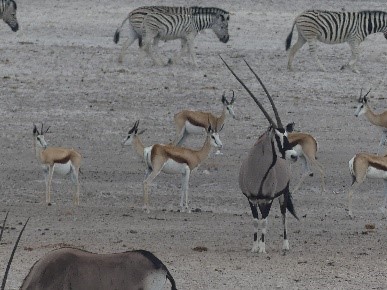

 Forest/Wood
Forest/Wood Wood is harvested and charcoal produced on farms by itinerant, seasonal workers coming from the north of Namibia, often living in poor conditions, without any recognition from the state, increasing their dependency to the farmers.
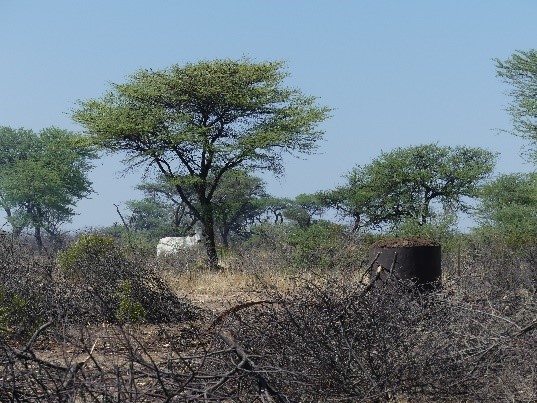
For decades, Namibia has suffered from a phenomenon called bush encroachment. The massive expansion of bush on previously open savannah has led to considerable economic and ecological damages. Nowadays, between 30 and 50% of the Namibian land area is affected by this phenomenon. Bush encroachment leads to a decrease in biodiversity and significantly dries up the land.
A key problem of bush encroachment is the reduced availability and productivity of grazing grounds. Once the pastures are overgrown by bush, other plant species like grasses vanish. Therefore, the pasture grounds do not provide enough fodder for local livestock farming, leading to significant restrictions on commercial and subsistence livestock farming in Namibia.
However, the bushes also offer opportunities as the bushy landscapes provide an enormous amount of biomass, ideal for the production of charcoal and other biomass-based products. Charcoal production is considered as a successful way to combat bush encroachment and the charcoal industry in Namibia has the largest demand for bush material so far. During production, the land is cleared from bushes, which allows for species present in former pasturelands to return, thus increasing biodiversity. See the following video from GIZ on the issue:
 Production
ProductionThese bush trees are harvested and put into metallic barrels. Charcoal is produced 2 days after igniting the barrels. Production releases GHG in the atmosphere.
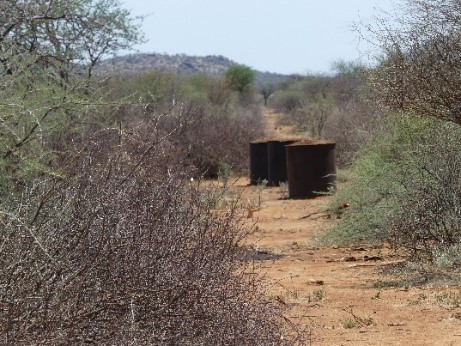
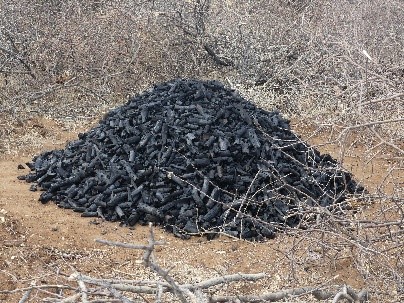
The conversion of bush biomass to charcoal production led to a yearly harvest of 60’000 hectares of pastureland. The farm owners employ workers to live and work on the farms. They are responsible for harvesting the bushes by clearing land using axes or chainsaws.
Charcoal in Namibia is produced using a simple technology. Metal barrels are filled with small pieces of bush and ignited from below, thus starting the carbonization process. The barrels are sealed for one to two days until the carbonization process is completed. The charcoal is left to cool completely in the barrels and then spread out on the ground. This is the so called stabilisation of charcoal.
This traditional way to produce charcoal emits pyrolysis gases into the atmsophere, participating to the global emissions of GHG.
 Workers
WorkersWood is harvested and charcoal produced on farms by itinerant, seasonal workers coming from the north of Namibia, often living in poor conditions, without any recognition from the state, increasing their dependency to the farmers.
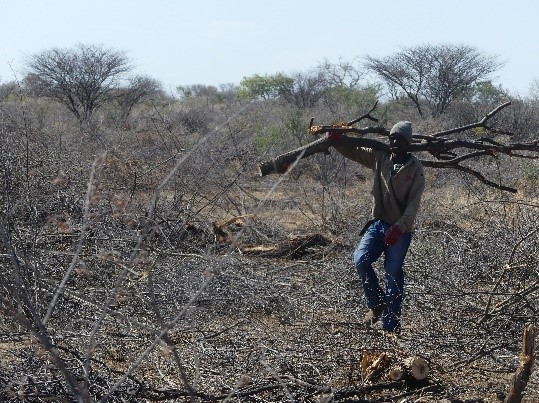

Through field visits to Namibia, we could identify an array of issues: Workers are living on isolated farms, which force them into economic dependence towards their employers (often they have no choice but to spend their earnings on food, supplied by their employers).
In addition, workers are paid per tonne and not per hour, which encourages group and family work. Good housing conditions, access to drinking water and sanitary facilities are often not present. In contrast, the vital charcoal industry might be a driver for social and economic sustainable development in the country. The charcoal market already employees 5000 people and is likely to grow. It is estimated that in total 20’000 people could work in the charcoal sector. A great share of employees are women, which releases them from their primary role in the household.
 Transparency
TransparencyThe journey is quite long from bush to stores, the charcoal is handled by a lot of diferent people that need to be identified.
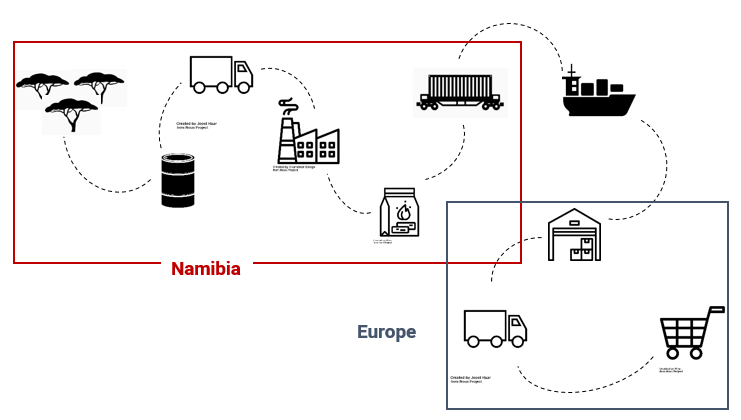
Produced in farms, the charcoal is then transported by truck to packing factories. In these plants, the charcoal is screened and put into containers. Containers are transported to Walvis Bay port and shipped to Europe. Trucks transport the container to the trader’s warehouse before being delivered to stores.
Globally, Namibia does not rank among the top producing countries however, the high charcoal export values makes Namibia the sixth largest exporter of charcoal in the world. The destination countries are South Africa, Germany, France, Poland and Greece.
Opposite to the positive ecological aspects of charcoal production in Namibia, we found significant evidence that social issues within the Namibian charcoal industry persist. After several field visits in this country, we recommend:
- Buyers to purchase FSC charcoal
- International and local stakeholders to develop more efficient technology to reduce GHG emissions
- International and local stakeholders to develop training programs and education center
- Farmers with the help of the traders to improve workers living conditions
- Farmers with the help of the traders to pay for workers’ PPE and transport
The charcoal industry can be a driver for positive social and economic developments in the country. Currently, the charcoal industry employs 6000 people with an expected potential of up to 20.000 people in the next years. We want to support this development alongside local and European partners, NGO, GIZ to assure respect and fair working conditions in the Namibian charcoal industry.